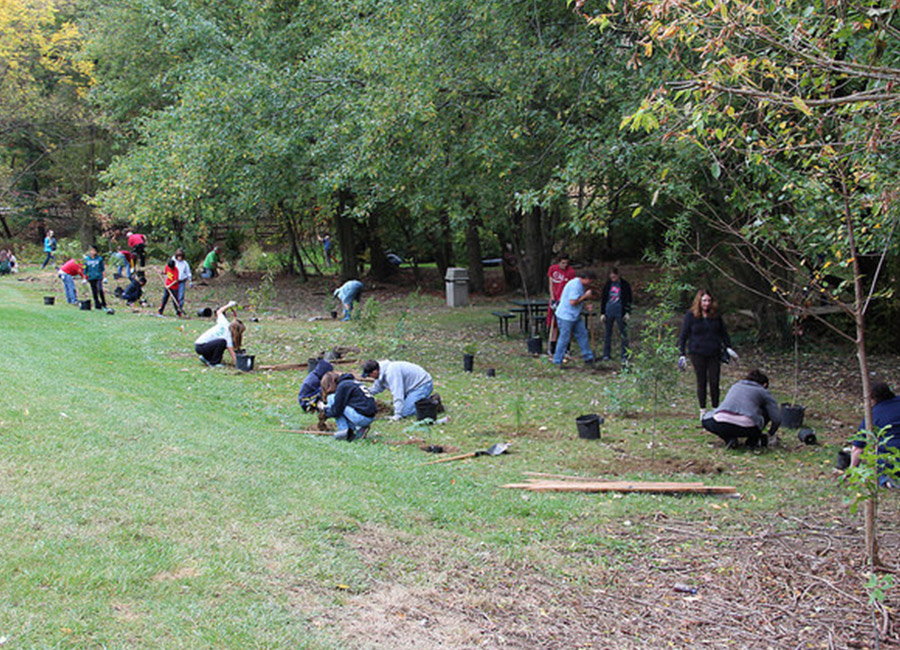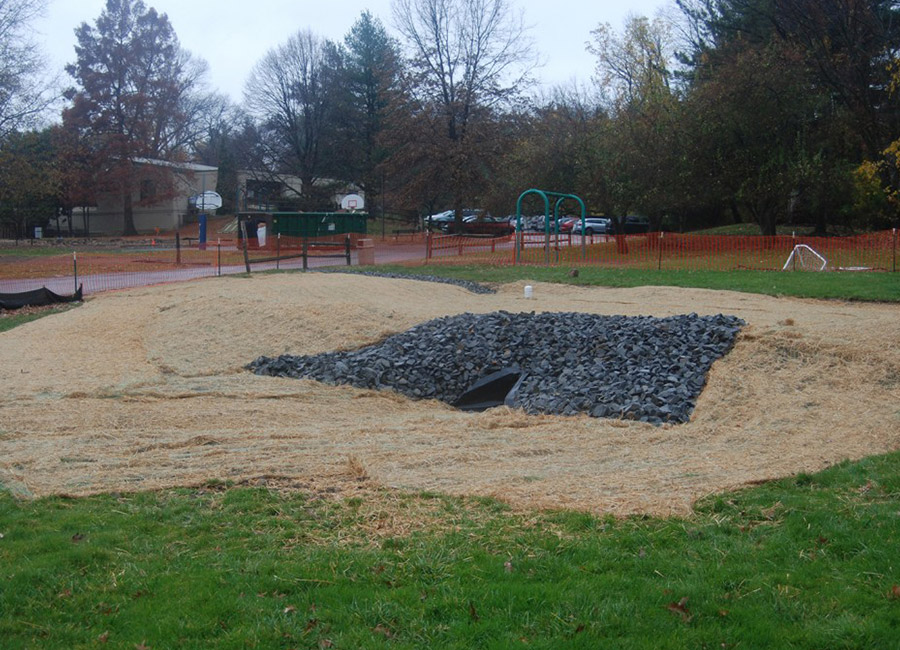Guest blog by Louis Platt of Abington Friends School.
I ran past the construction site on the Abington Friends School (AFS) campus for a whole year without knowing what was being built. The construction was alongside the Jenkintown Creek on the school campus, and it posed no problem to me as I ran my practice routes for the Cross-Country team. I figured the school had planted trees and plants there because they had the room to add more foliage. Little did I know that there was a much larger environmental reason behind the plan to plant hundreds of trees and plants along the Jenkintown Creek.
In 2014, AFS partnered with the Tookany/Tacony Frankford (TTF) Watershed Partnership to use a grant from the Delaware River Restoration Fund, a partnership between the Open Space Institute and the Academy of Natural Sciences of Drexel University, with major funding from the William Penn Foundation to restore the Jenkintown Creek, which has its headwaters on the AFS campus. In October 2014, students and family members planted 300 trees and shrubs along the banks of the creek to create a riparian buffer, which helps keep pollutants from reaching the creek.

“One of the big problems with the creek was erosion, and the riparian buffer was to stop the erosion,” said AFS Lower School teacher Rosanne Mistretta, who has played a major role in leading the restoration project for AFS.
Since then, Rosanne said she can already see and hear more wildlife coming to the creek, including birds who might use the cleaner water to drink from. It is still very early in the Jenkintown Creek restoration project, so Rosanne expects that more wildlife will come visit or even make a home near the creek. Mattias ’25, an AFS third grader, said he had learned that observing wildlife was a good measuring stick for the creek.
“Depending on what critters live in the creek, you can tell the health of the creek,” he said.
In October 2015, AFS and TTF started the second major phase of the Jenkintown Creek restoration, building a rain garden just above the source of the creek and next to the Lower School parking lot. The rain garden absorbs and stops pollutants that run off from the parking area from getting into the creek. Many pollutants, like gas, salt, pesticides, and oil have the potential to be washed into the creek after a rainstorm or when snow melts. If these pollutants flow into the creek they have the potential to affect larger waterways because water from the Jenkintown Creek flows into Tookany Creek, the Tacony Creek, and eventually the Delaware River.

Since learning the true meaning behind the Jenkintown Creek restoration, my appreciation for the creek and the riparian buffer has grown. I will now look out for any signs of new wildlife in or around the creek when I run by, or if I have a chance to spend extended time by the creek. It is also very cool now knowing that the restoration and renewal of the Jenkintown Creek on AFS’s campus will play a larger role in cleaning the water that flows into bigger waterways.
These projects were made possible with funding from the Delaware River Restoration Fund, a partnership between the Open Space Institute and the Academy of Natural Sciences of Drexel University, with major funding from the William Penn Foundation as well as the TreeVitalize Watershed Grant program, managed by the Pennsylvania Department of Environmental Protection’s Growing Greener program, and the PA Carbon Reduction Fund, funded by WGL Energy and Sterling Planet.